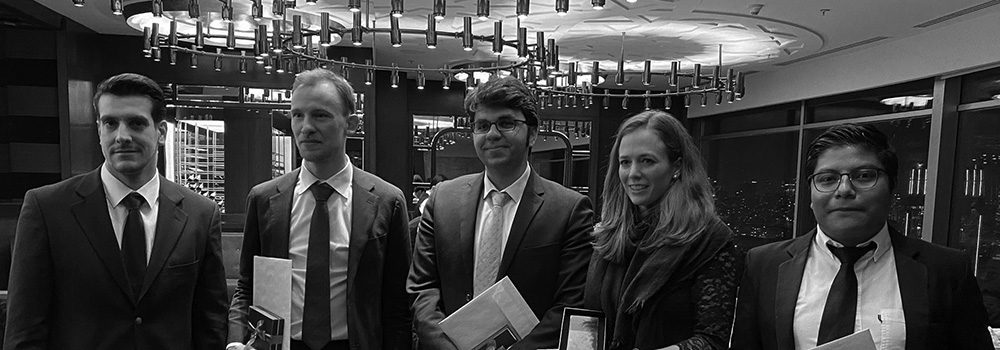
Stéphanie van der Lely, Dr. (Abteilung für Neuro-Urologie, Universitätsklinik Balgrist, Universität Zürich, Zürich, Schweiz)
Der Swiss Continence Foundation Award 2020 wurde Stéphanie van der Lely für ihre Arbeit mit dem Titel "Multichannel cortical recordings of lower urinary tract sensory evoked potentials to advance the evaluation of viscerosensory pathways" verliehen.
Zusammenfassung der präsentierten Arbeit:
Background:
Assessment of lower urinary tract (LUT) afferents is highly demanded to better understand their involvement in various LUT symptoms. Cortical recording of sensory evoked potentials (SEPs) during LUT stimulation offers such assessment with information on nerve fiber integrity and conduction velocity. Feasibility of LUTSEPs has been proven [1,2] and optimization of technique for bladder SEPs led to a 100% responder rate (RR), good reliability and high amplitudes using slower frequencies [3]. This is important for clinical implementation but still requires evaluation for the urethra. Additionally, current bipolar recording has limited information on the cortical electrical field distribution to evaluate the cortical processing of LUT afferent signals.
Objectives:
To expand bladder SEP findings to urethral stimulation sites and to systematically investigate the topographical distribution and microstates of SEPs for the entire LUT using cortical multichannel recording.
Design, setting and participants:
• Ninety healthy subjects (18-36 years) randomly assigned to one stimulation location: bladder dome, trigone, proximal, membranous (males only), or distal urethra.
• Repetitive electrical stimulation (0.5Hz,1.1Hz,1.6Hz) during 64 channel cortical recordings.
• Manual marker setting (P1,N1,P2 components) of Cz-Fz and Cz-AvgRef recordings.
• Scalp field data and microstates analysis using Randomization Graphical User interface.
Results:
Stable urethral SEPs with the main components P1, N1, P2 and >95% RR were recorded using slow frequency stimulation. While latencies did not show a frequency effect, amplitudes and RR decreased with higher stimulation frequencies.
N1 and P2 topographies presented central negativities and positivities with Cz in the respective minima and maxima. Analyses revealed consistent microstates, frequency effects for topographical distribution (N1,P2), and decreasing map strength with higher stimulation frequencies (P1,N1,P2). Cz-Fz recordings reported a higher RR compared to Cz-AvgRef.
Conclusions:
In complement to the bladder SEPs, optimized urethral SEPs now allow location-specific assessment of afferent nerve function for the entire LUT. Higher frequencies consistently led to lower amplitudes and RR, which is indicative of fiber refractoriness towards higher frequencies.
LUTSEP topographies indicate central generators in the somatosensory cortex, which are undetectable in a bipolar set-up. This novel, multichannel approach assesses LUTSEP amplitudes more comprehensively and might therefore be sensitive to pathological changes and its underlying cortical generators.
References:
[1] Gregorini et al. J Urol 2013:189(6):2179-2185.
[2] Knüpfer et al. Neurourol Urodyn 2018:37(8):2614-2624.
[3] van der Lely et al. Sci Rep. In press

